Cruise missile with loitering ammunition functions: Bayraktar Kemankeş
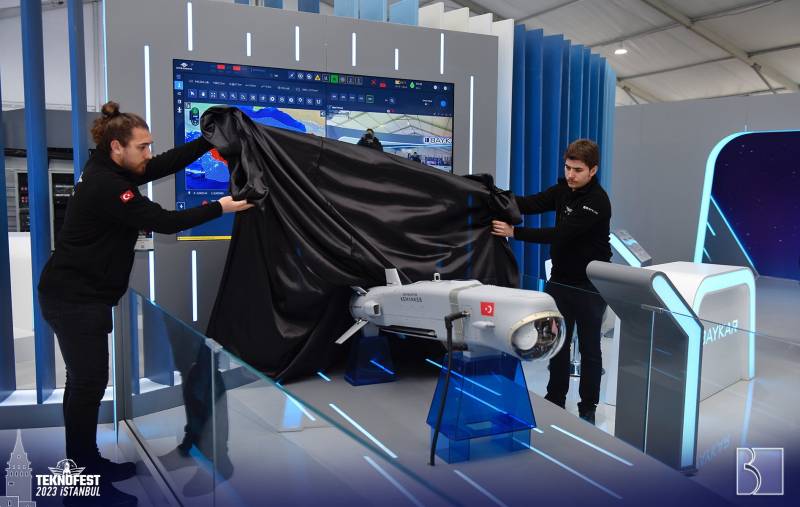
Presentation of the Bayraktar Kemankeş rocket, April 27, 2023
The Turkish company Baykar Tech continues to develop the direction of unmanned aviation complexes with reconnaissance and strike capabilities. A few days ago, for the first time, it presented a new development in this area - the Bayraktar Kemankeş light small-sized air-to-ground cruise missile. The performance of this product has been determined with regard to future use in a variety of media, incl. on existing UAVs of the Bayraktar series.
Premiere in Moscow
At the end of April, the military-technical exhibition Teknofest-2023 was held in Istanbul, during which the Turkish industry showed its new developments of various kinds. One of the main participants of the event was the Baykar Tech company, which is engaged in the creation of UAVs and related products.
On April 27, Baikar Tek held an official presentation of its new development - the Bayraktar Kemankeş cruise missile ("Kemankesh" - archer of the Ottoman army). Representatives of the developer company revealed the main features of the project. In addition, they showed full-size mock-ups of the product. One of them was demonstrated independently, and the second was hung on the pylon of the Bayraktar TB2 UAV.
According to the developer, the rocket has already passed the design stage and has already reached the preliminary tests. Flight tests will begin in the next one to two months. First, throwing launches will be carried out, and then full-fledged flights will be carried out with the engine turned on and the guidance tools tested.
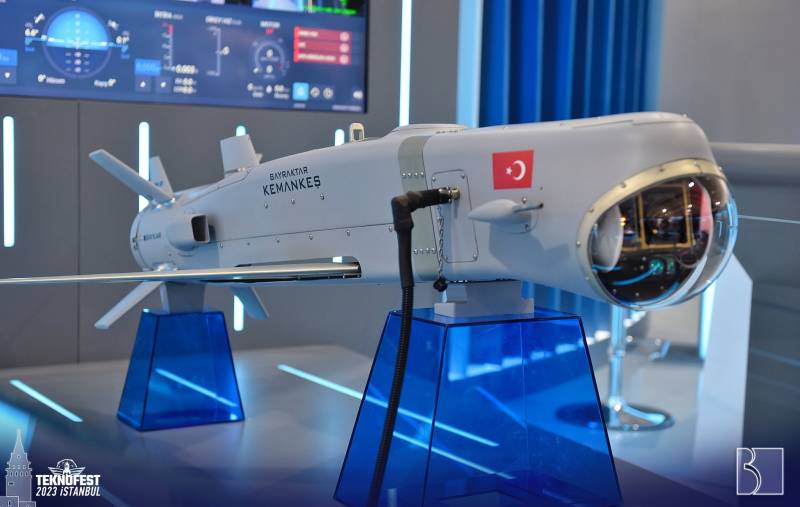
Rocket in flight configuration
The developer company plans to carry out all the remaining activities as soon as possible. Already in the next 2024, the Kemankesh product is going to be brought to the series and, probably, to deliveries to customers. Who can buy this weaponuntil specified. Probably, potential buyers only now learned about the new rocket and could not apply earlier.
At the moment, Kemankeş is considered only as an aircraft weapon intended for a wide range of carriers. However, work is already underway to further develop the project. It is planned to create a modification for ground platforms. Heavier versions of the missile with different combat qualities are also being developed.
At the intersection of classes
As follows from the published data, when developing the Kemankeş project, Baykar took into account the experience of using modern aviation systems and strike weapons in general. An interesting concept of ammunition was proposed and implemented, combining the main qualities of cruise missiles and loitering ammunition. So, the "Archer" can immediately fly to the intended target and hit it like a rocket. In addition, it is possible to enter a given area, followed by barrage and search for a target, as they do Drones-kamikaze.
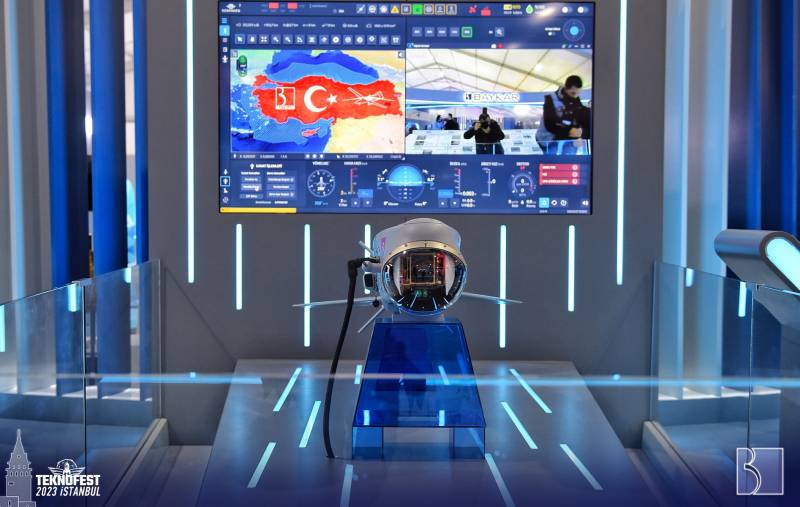
From the design point of view, the Kemankesh product is a small-sized, low-mass cruise missile. It is built in a body of high elongation with a cross section close to square. The nose has a large transparent spherical fairing for the homing head. A low-lying wing is placed in the center, which opens after being dropped. The tail section received X-shaped rudders and several stabilizers.
The total length of such a rocket is 1,73 m. The height, taking into account the plumage, is 400 mm. The span of the unfolded planes is 1,25 m. The maximum weight is declared at the level of 30 kg. Of these, 6 kg falls on the payload.
To obtain sufficient flight characteristics, the rocket is equipped with a small-sized short-life turbojet engine. Its air intakes are placed in the tail section of the rocket sides, and the nozzle is brought out to the tail section. With the help of turbojet engines, they plan to get a maximum speed of 720 km / h. The cruising required for a long search for targets will be half as much. The product will be used from heights of at least 5,5 km. The flight range with fuel economy will exceed 200 km. Duration - up to 1 hour.
The Bayraktar Kemankeş missile is equipped with an electro-optical homing head and remote controls. As part of the GOS, a video camera with an optical zoom of 36x and a two-plane stabilizer was used. The camera is located on a mobile installation with large pointing angles in two planes. The GOS also has its own laser rangefinder.
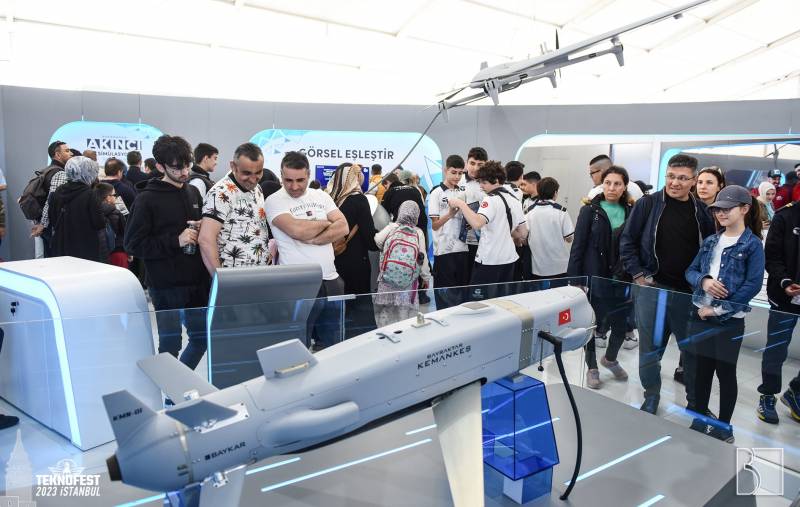
The picture from the camera will be transmitted to the carrier aircraft pilot or UAV operator via a two-way radio channel. The operator has the ability to remotely control the flight of the rocket. He can independently lead the product directly to the target, like a kamikaze drone, or take the target for automatic tracking with further work of the seeker. Existing means of communication allow the rocket to move 50 km away from the carrier, operator or relay. In the future, the range is going to double.
According to the developer, the rocket carries a payload of 6 kg - probably, the warhead is meant without taking into account other means. The type of warhead is not specified. It can be a high-explosive fragmentation or a shaped-charge fragmentation charge. It should be placed in the central part of the rocket, behind the seeker and near the center of gravity.
Potential carriers
From other air-to-surface cruise missiles with similar flight characteristics, the new Turkish Bayraktar Kemankeş is smaller and lighter. Such results were obtained by switching to a turbojet engine, as well as by a reasonable reduction in the size and weight of the structure.
The Kemankesh rocket weighs only 30 kg, which will allow it to be used both on aircraft and on UAVs. Baykar Tech mentions drones of its own design as future carriers. So, Bayraktar TB2 will be able to carry four missiles, one on each pylon. The larger TB3 should carry six of these items, and the Akıncı up to eight. In all cases, only a fraction of the maximum load capacity will be used.
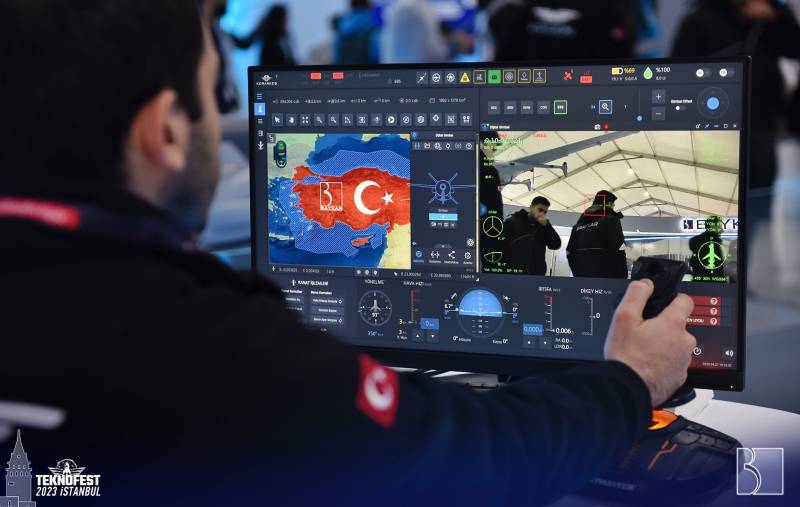
The operator uses an optoelectronic seeker
It should be recalled that only two of the listed UAVs have been put into service so far. TB2 is actively used in Turkey and shipped abroad, while Akıncı has only recently gone into production. The TB3 product has not yet been tested, but it is expected that it will enter service by the time the serial Archers appear.
Ideas and their implementation
The Bayraktar Kemankeş project was created on the basis of an original and curious concept. In the near future, the development company will have to conduct extensive tests and determine whether the finished product meets the proposed ideas and expectations. Nevertheless, it is already possible to evaluate the main decisions of the project.
In fact, the main goal of the Kemankesh project is to create a new model of guided weapons for the Bayraktar series UAVs. The new missile will have to complement existing designs and expand the combat capabilities of Baykar Tech's drones. This problem has already been partially solved and work remains to be done.
"Archer" has a relatively small weight and dimensions. Due to this, compatibility with unmanned platforms of the middle class is ensured. At the same time, the lightweight design has a limited fuel capacity and is only capable of carrying 6-kg warheads with limited power. It is possible that the parameters of the warhead will be improved in the following projects - but at the expense of increasing the rocket and related restrictions.
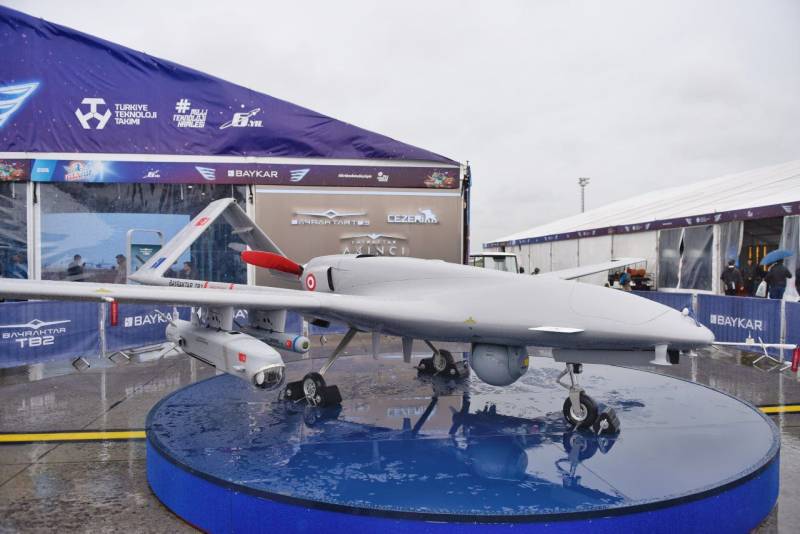
UAV Bayraktar TB2 with modern weapons. On the pylon on the left is the Kemankesh rocket
Increased parameters of the range and duration of the flight were obtained due to the small-sized turbojet engine. However, such a power plant limits cruising and maximum speed compared to other types of engine. In addition, it is not yet clear what the actual characteristics of the selected engine will be, and whether it will show the calculated reliability.
Of great interest is the presence of two guidance modes. The missile itself can fly to the designated target or be controlled by the operator until the last moment. Such a combination of the qualities of a rocket and loitering ammunition should make the Kemankesh product a more flexible strike tool. However, such guidance requires stable radio communications. This limits the range of combat use, and also makes the complex vulnerable to electronic warfare.
On the eve of the test
As part of the Bayraktar Kemankeş project, Baykar Tech proposed and implemented an interesting guided munition concept for various air platforms, incl. unmanned. Judging by the recent presentation, the design work has already been completed and, in general, they coped with the tasks set.
In the coming months, full tests of the new missile will begin. During these activities, it is necessary to check the operation of all systems, as well as to determine the operability of the proposed concept. Whether the Kemankesh products will be able to cope with all the tasks and show the calculated characteristics is still unknown. However, the development company makes optimistic forecasts and is going to start mass production next year.
Information